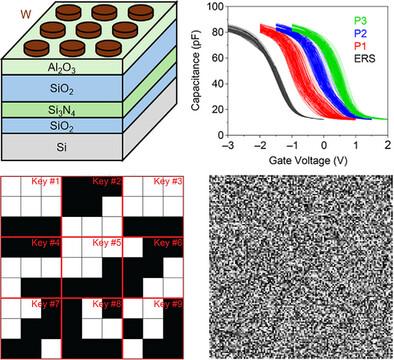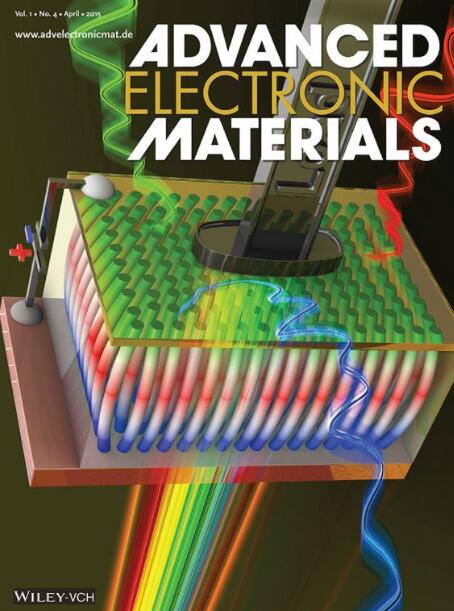Hardware Security for Edge Computing Via CMOS-Compatible Multi-Level Flash Memory with Hash-Based Key Generation
IF 5.3
2区 材料科学
Q2 MATERIALS SCIENCE, MULTIDISCIPLINARY
引用次数: 0
Abstract
Ensuring secure and energy-efficient authentication of resource-constrained devices has become a critical challenge owing to the rapid expansion of the Internet of Things (IoT) ecosystem. Physically unclonable functions (PUFs) that exploit inherent manufacturing variations to generate device-unique keys have emerged as a promising hardware-based security primitive. In this study, a PUF architecture is proposed that utilizes multi-level programming of flash memory capacitors. Reliable and reproducible binary responses are generated across multiple programmed states by extracting flat-band voltage variations from capacitance–voltage measurements. Performance is evaluated using the uniformity, P-value, inter-Hamming distance, and intra-Hamming distance, which indicated strong randomness, uniqueness, and stability. To further enhance the entropy and cryptographic strength, a hash-based message authentication code (HMAC)-based key derivation function is integrated, which transformed the PUF outputs into high-entropy pseudorandom keys. The final architecture supported key generation with zero standby power and is compatible with commercially available memory structures, thereby enabling low-cost and scalable deployment in secure IoT systems. These results highlight the potential of multi-level memory-based PUFs as a lightweight and robust solution for next-generation hardware security.

基于哈希密钥生成的cmos兼容多级闪存的边缘计算硬件安全性
随着物联网(IoT)生态系统的快速扩展,确保资源受限设备的安全节能认证已成为一项关键挑战。物理不可克隆函数(puf)利用固有的制造变化来生成设备唯一密钥,已经成为一种很有前途的基于硬件的安全原语。本研究提出一种利用快闪记忆体电容多层级编程的PUF架构。通过从电容电压测量中提取平带电压变化,在多个编程状态中产生可靠和可重复的二进制响应。使用一致性、p值、inter-Hamming距离和intra-Hamming距离对性能进行评估,显示出较强的随机性、唯一性和稳定性。为了进一步提高熵和密码强度,集成了基于哈希消息认证码(HMAC)的密钥派生功能,将PUF输出转换为高熵伪随机密钥。最终的架构支持零待机功耗的密钥生成,并与商用内存结构兼容,从而实现在安全物联网系统中的低成本和可扩展部署。这些结果突出了基于多级内存的puf作为下一代硬件安全的轻量级健壮解决方案的潜力。
本文章由计算机程序翻译,如有差异,请以英文原文为准。
求助全文
约1分钟内获得全文
求助全文
来源期刊

Advanced Electronic Materials
NANOSCIENCE & NANOTECHNOLOGYMATERIALS SCIE-MATERIALS SCIENCE, MULTIDISCIPLINARY
CiteScore
11.00
自引率
3.20%
发文量
433
期刊介绍:
Advanced Electronic Materials is an interdisciplinary forum for peer-reviewed, high-quality, high-impact research in the fields of materials science, physics, and engineering of electronic and magnetic materials. It includes research on physics and physical properties of electronic and magnetic materials, spintronics, electronics, device physics and engineering, micro- and nano-electromechanical systems, and organic electronics, in addition to fundamental research.
 求助内容:
求助内容: 应助结果提醒方式:
应助结果提醒方式:


